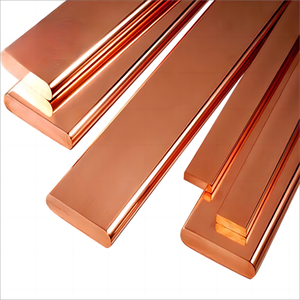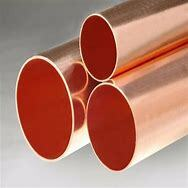1. Introduction
In the past 48 hours, global copper prices have surged due to supply chain disruptions in Chile and increased demand from renewable energy projects. This spike has renewed interest in copper recycling—especially stripping copper wire for scrap—as individuals and small businesses look to capitalize on higher copper rod price and copper strip price values. If you’ve got old wiring, motors, or cables lying around, knowing the best way to strip copper wire can turn waste into cash.

Stripping copper wire isn’t just about profit—it’s also about sustainability. Clean, bare copper fetches significantly more at scrap yards than insulated wire. In this guide, we’ll show you the safest, fastest, and most effective methods to strip copper wire for recycling, plus tips on handling related copper products like copper strip, copper rod, and earthing components.
2. Why Strip Copper Wire?
Scrap yards pay top dollar for bare bright copper—typically 2–3 times more than insulated or burnt wire. Burning copper wire for scrap is not only illegal in many areas but also releases toxic fumes and degrades copper quality. Stripping wire properly preserves the metal’s integrity and maximizes your return.
You’ll also encounter other valuable copper forms: copper strip (including flat copper strip, 1mm copper strip, or copper earth strip 25x3mm), copper round bar, copper bar, and even copper bonded earthing rod or copper clad ground rod. Knowing how to identify and prepare these can boost your earnings.
3. Tools You’ll Need
The best way to strip copper wire depends on volume and wire type. Here’s what you might use:
- Wire strippers (manual or automatic)
- Utility knife or razor blade (for small jobs)
- Mechanical wire stripper (for bulk processing)
- Heat gun (optional, for stubborn insulation)
- Safety gloves and goggles
Avoid using open flames—burning copper wire for scrap is dangerous and reduces value.
4. Step-by-Step: Hand Stripping Small Batches

For household wiring or short lengths, hand stripping is simple and effective.
Start by cutting the wire into manageable 1–2 foot sections. Use a utility knife to make a shallow lengthwise cut along the insulation—don’t dig into the copper. Peel back the insulation like a banana skin. If it’s tight, twist the wire slightly as you pull.
For thicker cables, score the insulation at both ends, then slice down one side and peel. Always wear gloves to protect your hands from sharp edges.
5. Fast Way to Strip Copper Wire: Mechanical Strippers
If you’re processing more than a few pounds, invest in a mechanical wire stripper. These devices can handle everything from thin copper strip wire to thick industrial cables.
Feed the wire into the machine, and rotating blades cleanly remove insulation without nicking the copper. Some models even sort copper by gauge. This is the fastest way to strip copper wire for scrap and ideal for recyclers or electricians clearing job sites.
6. What About Copper Rods and Strips?
While stripping wire, you might also come across other copper items worth recycling:
- Copper rod: Often used in welding or grounding. Look for copper welding rod, copper brazing rod, or copper to copper welding rod.
- Copper earth rod or earthing rod copper: These are typically copper bonded steel or copper clad steel earth rod types. Even if coated, they still hold value.
- Copper strip: Includes flat copper strip, beryllium copper strip, nickel plated copper strip, or copper strip roll. Thin copper strips from transformers or busbars are highly recyclable.

Check local scrap yards for copper strip price and copper rod price—they often pay separately for different copper forms.
7. Common Mistakes to Avoid
Never burn insulation off. Burning copper wire for scrap releases dioxins and leaves oxidized, low-grade copper.
Don’t mix copper types. Separate bare bright wire from tin-coated, brass, or aluminum. Clean copper fetches the best price.
Avoid damaging the copper. Deep cuts or kinks reduce weight and value. Use proper tools—improvised methods often backfire.
8. Where to Sell Your Stripped Copper
Once stripped, take your copper to a licensed scrap yard. Search for ‘copper strip near me’ or ‘copper bars for sale near me’ to find local buyers.
Bring ID—most recyclers require it by law. Ask about current copper rod price and whether they accept copper bonded ground rod or copper clad steel ground rod, as policies vary.
9. Bonus: Other Copper Items Worth Knowing
Beyond wire, keep an eye out for:
- Copper tubing and aircon copper pipe (common in HVAC systems)
- Copper bus bar or flexible copper bus bar from electrical panels
- Copper ingot or cu bars from industrial sources
- Copper roof strip or copper edging strip from construction sites
Even small pieces like copper metal strips or copper alloy strip add up over time.
10. Conclusion
Stripping copper wire for scrap is a smart, eco-friendly way to earn extra cash—especially with copper prices on the rise. By using the right tools and techniques, you’ll get clean, high-value copper without risking safety or legality. Whether you’re handling copper strip wire, copper rod for welding, or copper bonded earthing rod, proper preparation ensures maximum return. Start small, stay safe, and turn your copper clutter into cash.
Our Website founded on October 17, 2012, is a high-tech enterprise committed to the research and development, production, processing, sales and technical services of ceramic relative materials such as How. Our products includes but not limited to Boron Carbide Ceramic Products, Boron Nitride Ceramic Products, Silicon Carbide Ceramic Products, Silicon Nitride Ceramic Products, Zirconium Dioxide Ceramic Products, etc. If you are interested, please feel free to contact us.

